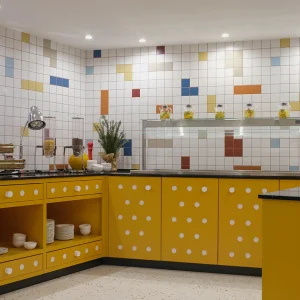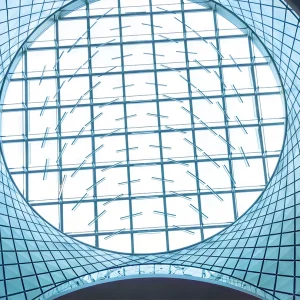
Net Effect, a 100 per cent recycled content carpet tile that contains commercial fishing nets,has been launched by Interface after debuting at Neocon in Chicago this summer.
The product is pioneering Interface’s joint business venture with animal conservation charity the Zoological Society of London, Net-Works was created to help address issues surrounding discarded fishing nets within the Danajon Bank region of the Phiippines.

Black Sea, and Driftwood and Caspian are part of the Net Effect range created by Interface in a venture with the Zoological Society of London
With a growing environmental problem of discarded fishing nets in some of the world’s poorest communities, as well as a need for a viable ‘waste stream’ to fulfill Interface’s nylon recycling goal, the project forms part of Interface’s longer-term goal, Mission Zero; a promise to eliminate any negative environmental of its products by 2020. Chip DeGrace, Interface’s executive creative director says ‘products like Net Effect – and programmes like Net-Works – demonstrate how creative thinking can change the way we do business and move us closer to the ultimate goal of being a restorative enterprise.’
Net Effect was created by David Oakey, owner of David Oakey Designs and an exclusive designer for Interface. ‘Aesthetically, we wanted Net Effect to capture the positivity of the Net-Works partnership between Interface and the ZSL and the beauty of the waters it’s so closely tied to.’ says Oakey. ‘This collection connects people with the emotions and memories associated with the beach, but their enjoyment is its most superficial benefit. What’s beneath the surface – including the product’s ties to the good work Net-Works is doing – is what makes it extraordinary.’
The winter gloom may be unsettling for many, and a time that challenges our creative abilities, but it is dark winters that have partly inspired Milliken’s latest floor range Nordic Extremes.

Black Sea, and Driftwood and Caspian are part of the Net Effect range created by Interface in a venture with the Zoological Society of London
Designers used the ‘extreme environments’ as well as other typical geological features of Nordic countries, such as landscapes shaped by glacier and volcanic activity, to produce the range in the UK. Combining the use of Milliken’s nylon tufting technology to create textural effects, designers also explored Nordic culture including contemporary art, music, language and religion to create the Nordic Extremes range.
Alison Kitchingman, director of marketing and design at Milliken, says: ‘We continually draw on inspiration from our surroundings to bring new products to life and stimulate the creative ideas of the design community.’
Nordic Extremes is manufactured in the UK using electricity generated by renewable energy sources. As part of Milliken’s continuing commitment to sustainability the range is manufactured using a 90 per cent recycled content backing, which also enhances the product’s acoustic properties.





